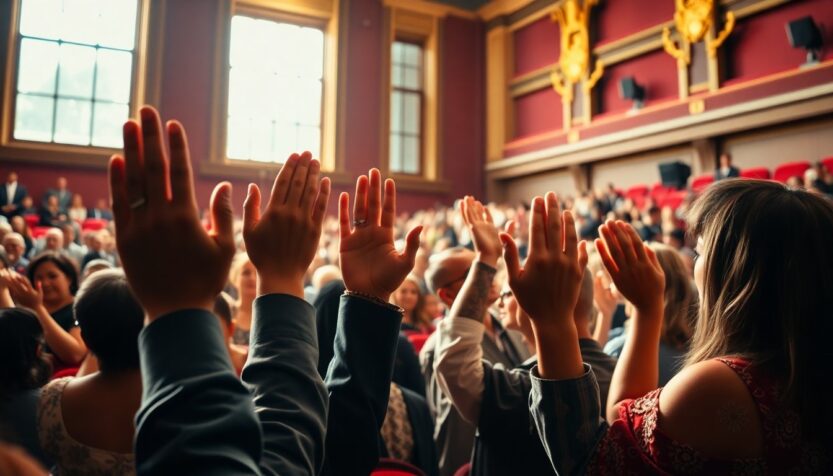Standing ovations have become a staple at film festivals such as Venice and Cannes. However, have they lost their meaning? What began as a spontaneous show of appreciation has transformed into a ritual, where the duration of applause can be interpreted as a measure of a film’s success. This raises an important question: are these ovations genuine expressions of admiration, or merely components of a larger spectacle?
From Spontaneity to Strategy
Once, a standing ovation was a fleeting moment, a natural reaction to a captivating film. Today, it resembles an endurance test, a performance in its own right. Audiences stand, clap, and cheer, not out of instinct, but because everyone else is doing it. It creates a collective anxiety where no one wishes to be the first to stop clapping. This situation evokes a sense of “arms race,” where the stakes are high and the pressure to perform is palpable.
For instance, at the Venice Film Festival in 2025, audiences reportedly gave a staggering 23-minute ovation for *The Voice of Hind Rajab*. Who truly times these events? At what point does the applause shift from being about the film itself to becoming a spectacle? By the twelfth minute, the clapping feels more like a plea for release than a genuine expression of appreciation. Moreover, the sight of actors such as Jacob Elordi, teary-eyed and cycling through a range of expressions from gratitude to bewilderment, raises further questions. Is it joy, or are they simply running out of ways to appear grateful?
Applause as Content
In a world characterized by short attention spans, standing ovations have emerged as a new metric for cultural value. Headlines proclaim, “14-minute standing ovation for *Blonde*!” as if that alone defines the film’s worth. Yet, some of the loudest claps are reserved for films that disappear after their festival run. It resembles a peculiar game of applause poker, where the true winners are those capable of sustaining the clapping the longest.
This shift also blurs the lines of appreciation. Films are now applauded not only for their quality but also for their causes—climate action, social justice, and more. This creates a complex landscape where the duration of applause may reflect personal values. However, it raises critical questions: Is a 15-minute ovation for a film about injustice insufficient? Does a 17-minute ovation equate to greater credibility? The irony is palpable as actors navigate this new terrain, trapped in a game they did not establish.
The Burden of Performance
What occurs when the act of receiving applause becomes a performance in itself? Actors face a dilemma: do they smile, cry, or simply stand still? The atmosphere feels almost religious, with unwritten etiquette that is vague and somewhat daunting. Standing ovations are intended to be moments of humility, yet they often devolve into obligations to perform, endure, and accept praise that may sometimes feel insincere.
As audience members, we find ourselves in a peculiar position—frozen in place, clapping until it feels socially unacceptable to stop. It becomes a collective obligation, reminiscent of singing hymns in a church where faith is shaky. The longer we clap, the more detached we become from the sentiment behind it. Oblivion awaits those who dare to disrupt the cycle. So, who else feels trapped in this bizarre applause loop? Is it merely me, or does this spectacle warrant serious reevaluation?





